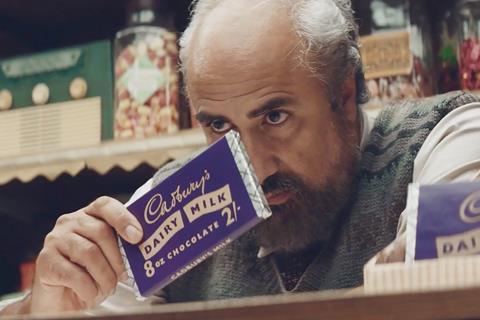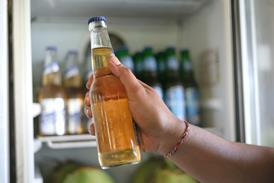
Thousands of food and drink ads that faced being outlawed under a new pre-watershed junk food ban are to be allowed to air under new regulations published by ministers.
After a battle over the wording of the new rules, which saw companies threaten to take the government to court to challenge the ban, ministers have added additional sections to the legislation on ads for ‘less healthy food products’ (LHFs).
Under a statutory instrument published last week, brand ads that don’t specifically include HFSS products will no longer be barred, rowing back on previous guidance, which said they would be outlawed.
It means that companies including the likes of Cadbury, Kellogg’s and Just Eat will be allowed to continue spending millions advertising prior to the new 9pm watershed, and online, provided their ads do not specifically include individual HFSS products.
Under the brand advertising exemption, advertisers will be allowed to advertise their “master brand” and brand name of a range of products, without showing an identifiable LHF product itself.
The ban, which had been due to come into force next month, was delayed until January next year by ministers in May, amid huge confusion over how it would apply to brand ads. A voluntary ban by the food and media industry will still come in from next month.
The Grocer revealed in February that several food companies had instructed lawyers to prepare a legal challenge to the ban, claiming it “overreached” the original aims of the legislation, with the Labour government having confirmed it was not intended to ban brand ads.
Health group outrage
However, health groups have accused the government of making a huge u-turn that would water down the impact of the legislation.
The new statutory instrument, put before parliament by public health minister Ashley Dalton, replaces a temporary statutory instrument that was introduced before the summer recess.
The Grocer understands the Committee of Advertising Practice will launch a new consultation within days on the back of the government’s move, before publishing final guidance for firms on how to apply the changes. Sources said it would row back on its previous guidance, which has warned companies brand ads would be impacted.
A source told The Grocer the arrival of the government’s new working meant “the situation is now much clearer than it was”.
“We’re not being overly triumphalist because we’re still looking down the sharp end of a massive reduction in ad spend, but the huge confusion over brand ads that existed in the summer now appears to have been tackled,” the source said.
“Although the statutory instrument is very technically worded essential it means if you are a Cadbury and you do a drumming gorilla ad and that doesn’t depict a less healthy product then you can run that on TV as a brand ad.
“Previously to this despite repeated ministerial statement the wording of the regulations was not clear and did risk these ads being outlawed, which would have gone much further than the original legislation intended.
“The government has made it much clearer where the boundaries lie.”
Read more:
-
Wes Streeting says supermarkets will be ‘set free’ to decide how to meet new healthy food standard
-
Retailers and food brands must help silence the ‘food noise’
-
Food strategy blow as Defra leadership stripped by Starmer reshuffle
A spokeswoman for the Advertising Association said: “We welcome the government bringing clarity on this important issue, in advance of the statutory implementation of the Less Healthy Food advertising restrictions on 5 January 2026.
“We look forward to continuing to work with the government and supporting our members in implementing the rules during the industry agreement period from 1 October.”
Obesity Health Alliance director Katharine Jenner said: ”“These long-awaited regulations are an important step in prioritising children’s health by removing the spotlight from specific unhealthy food products. However, the government could and should have gone much further. Sustained industry lobbying has weakened the restrictions, resulting in a missed opportunity to fully protect children’s health.
”While we welcome the clarity provided, and the fact that implementation will finally begin in January - more than three years after it was meant to be introduced - the reality is that adverts which promote unhealthy food and drinks through clever marketing and branding tactics can still be cast in a starring role, continuing to put children’s health at risk.
The government must now show it is serious about protecting children’s health by closing loopholes and setting out the next steps for ending all forms of unhealthy food advertising to children.”



















No comments yet